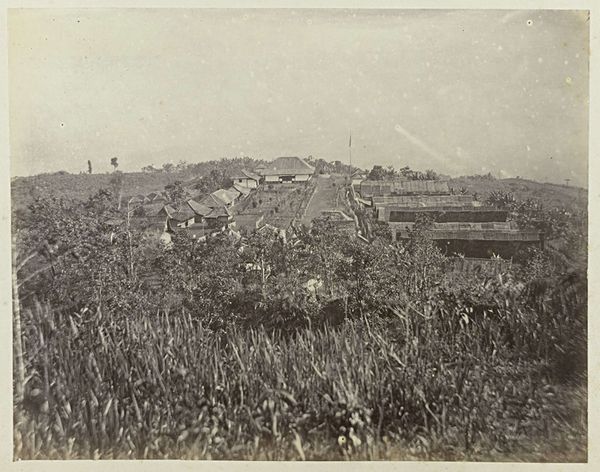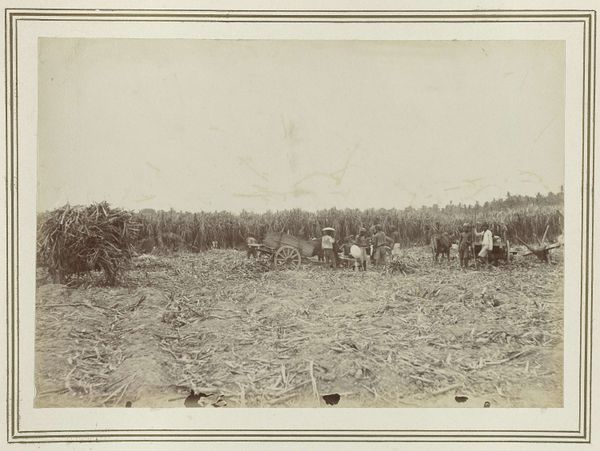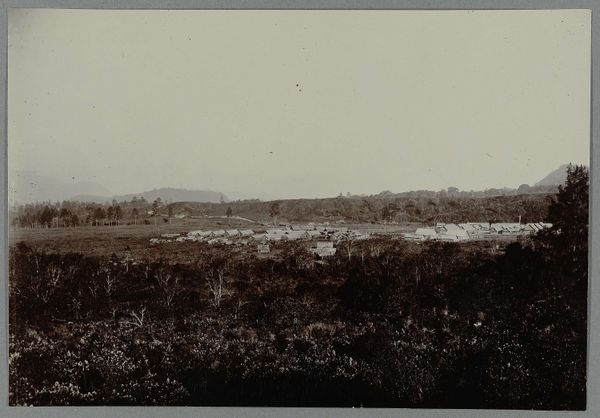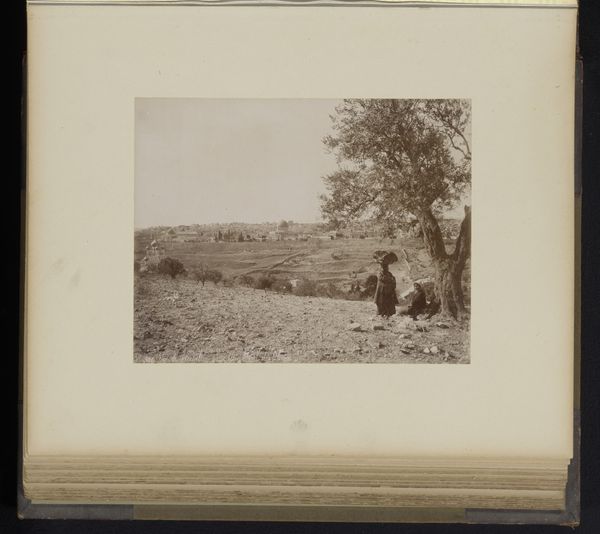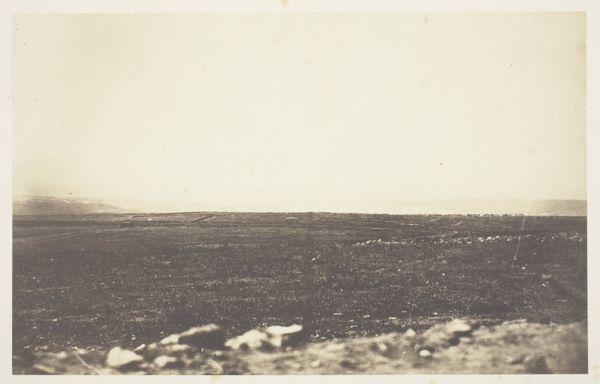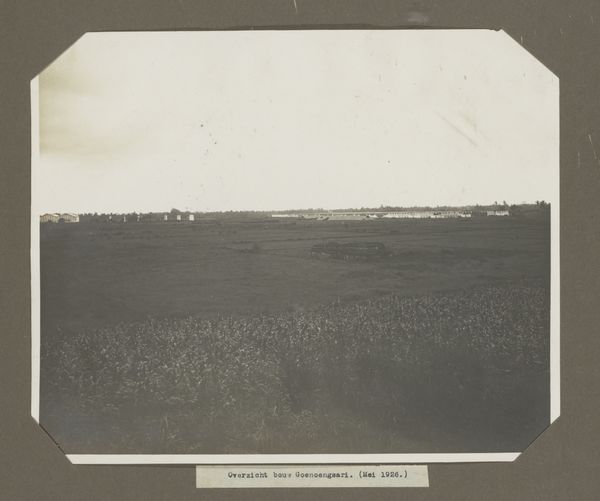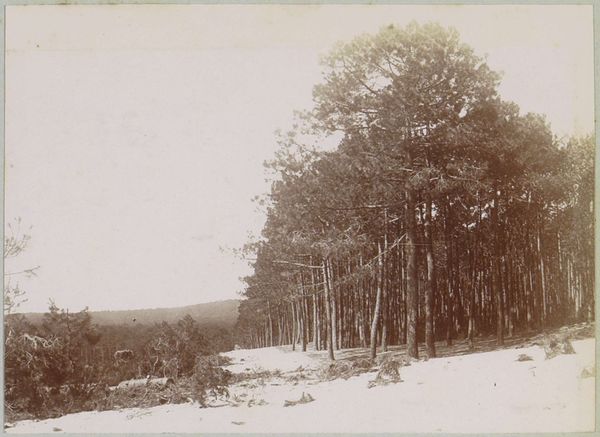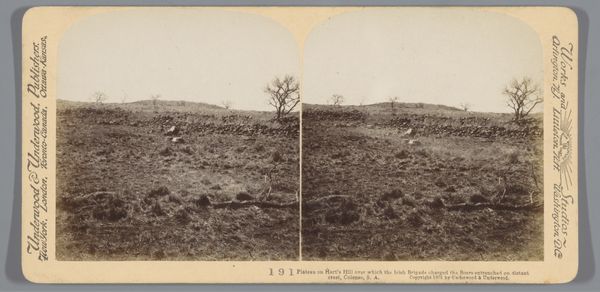
photography
#
landscape
#
photography
#
orientalism
#
realism
Dimensions: height 123 mm, width 173 mm
Copyright: Rijks Museum: Open Domain
Curator: Here we see an albumen print entitled "Opzichter in veld bij oogst," dating from around the 1900s to 1910s. It's part of the Rijksmuseum collection, offering a fascinating glimpse into the landscape and its human elements. What strikes you initially about the image? Editor: The textural complexity! The field in the foreground is a dense, tangled network of lines, contrasting with the solid masses of sugarcane in the mid-ground. And that sky is such a vast, grey plane, almost swallowing the scene. There is an emphasis here that flattens the space within the scene. Curator: Indeed. Notice the figures dispersed throughout the composition, most noticeably the overseer dressed in white. He serves as a powerful symbol of authority and control within the visual narrative. Consider the visual impact of his luminous garments, drawing the eye immediately to the individual and his symbolic cultural associations in the socio-economic dynamics of colonial agricultural labor. Editor: The luminance draws my eye, certainly. And yet, consider the scale. He may wear the clothes that signal authority, but it doesn't diminish the repetitive horizontality established throughout this photo’s composition. Look at the way the lines lead across and away. Is his stance an imposition or an acknowledgement of something unchangeable, a rhythm beyond himself? Curator: A provocative suggestion. It seems, in my view, that the anonymous photographer here intends to evoke the orientalist trope through subject matter but also more acutely in their visual framing. The photograph, for contemporary viewers, perpetuates and consolidates assumptions about hierarchy in colonial settings through a visual compression and simplification of unequal relationships. Editor: It's certainly charged. But beyond those charged political elements, consider how successfully the artist—excuse me, photographer—creates visual depth here using only tonal variations, subtly structuring the visual components with limited dynamic variation in grayscale. He transforms that colonial space, however problematic its associations might be, into an experience dominated by visual experience itself. Curator: A powerful and visually engaging synthesis, no doubt. These contrasting ways of perceiving and organizing a difficult space and period yield much to explore! Editor: Precisely! I will never overlook what formal and contextual tools lend to this artist's composition.
Comments
No comments
Be the first to comment and join the conversation on the ultimate creative platform.
